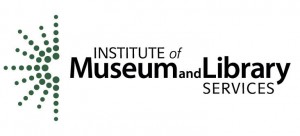In a previous post about acquiring digital content, Stacey mentioned that we often “take it all in, the good shepherds that we are. We build systems and websites that can do nifty things.” Stacey’s post was a cautionary tale, and others have expressed these concerns, too. Now I’ll add my voice to it.
I’m a firm believer in being practical about what I attempt to do and honest with others about what I can’t. In my case, that means I won’t “take it all in,” and for what I do take in, I’m critical about what I will keep in electronic form.
A post I read last year on the Society of American Archivists’ listserv for Lone Arrangers (i.e., people who work in archives and have no other full time staff assigned) touched on this topic. The post was about how lone arrangers were managing email preservation and many products were mentioned and then this came from an archivist who also teaches archives management courses:
“The archiving email question comes up all the time, and I have a stock answer. I tell my [X university] preservation students to be bold, if they have to, and keep paper. Yes, paper. Print it out, attachments included, stick it in a folder, and forget about it.
“My motto as an archivist, lone arranger and preservation teacher is, ‘Don’t sign up for the impossible.’ If big institutions are working hard and spending more to sustain their email archives, we little guys ought to be asking ourselves why. That way, we’ll have the answers when the administration comes to us and says to start archiving email.”
I couldn’t agree more! From my POV, it’s all about choosing where you are going to invest your time. I’m lucky to work in a private institution, so I am not subject to all the public records requirements some of my colleagues are, but I think there are larger issues at stake and as a profession I think we do need to start pushing back a bit.
Our users (and the people/agencies that “mandate” things of us) don’t have reasonable expectations when it comes to digital objects. They think these things exist in tangible forms because they can see them before their very eyes, but the underlying code is anything but tangible. And the way objects are created and served by our users makes a lot of what we might capture not really worth saving, according to “best practices” (thinking of those 72dpi jpgs I was sent awhile ago).
For us to capture objects and make them meaningful over time, we have to impress on the people who create them and on the people who choose the systems our users operate in, that standards exist for a reason. A printed piece of paper is not the flashiest use of the latest new technology, but as long as the paper and ink last, and as long as the language/symbols printed on paper hold meaning, it can be conveyed over time!


